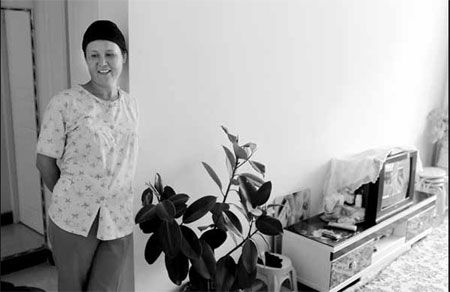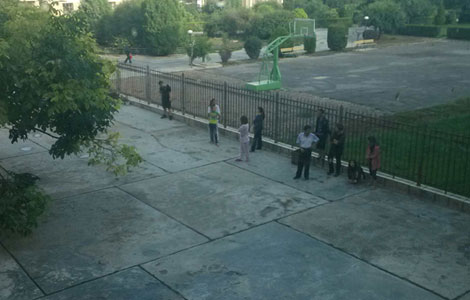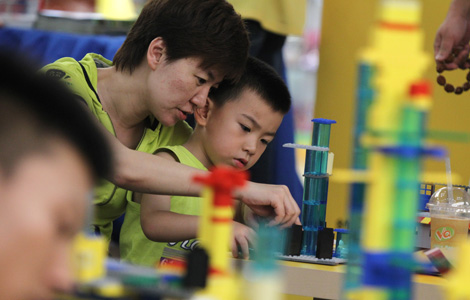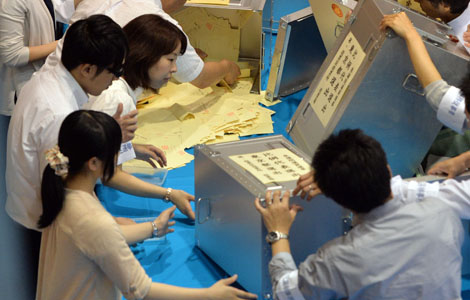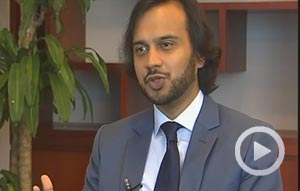Government aid gives people access to new housing
Updated: 2013-07-22 08:17
By Zhao Lei in Fukang, Xinjiang (China Daily)
|
||||||||
|
Rezya Malik's family lives in a new home at a residential complex in Ganhezi township, Xinjiang, that was built using financial assistance from Shanxi. More than 1,100 families have benefited from the project and moved out of a shantytown. Cui Meng / China Daily |
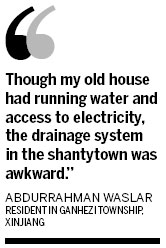
Bai Yingshu, 76, said he never imagined his family would live in a new, spacious apartment in his lifetime.
"We had lived in a cave-house for 28 years before moving into the new home in 2011," said the retired worker from a steel mill in Fukang, a small city in the Xinjiang Uygur autonomous region.
"The cave-house was only 36 square meters, and it once had to accommodate my family of six. Now my wife and I live in the 86-square-meter apartment. I never dared to think about living in such a nice apartment at my age."
The local government gave Bai 32,300 yuan ($5,260) in compensation for his cave-house, which was demolished to make way for a new affordable housing project, and another 35,000 yuan as a removal subsidy.
"So the new house cost me only 30,000 yuan," he said.
Bai said he is thankful toward the Fukang government as well as "those kindhearted people from Shanxi province who come here to help us".
In March 2010, the central government decided that 18 provincial-level regions including Beijing, Shanghai, Shanxi and Zhejiang, and Shenzhen, a wealthy city in Guangdong province, should allocate funds and professionals to aid Xinjiang's development over a 10-year period.
Jintianyuan, the residential complex where Bai lives, was built with financial aid from Shanxi and is part of the local government's ambitious project to renovate the vast shantytown in the city's Ganhezi township.
Once the project is completed, more than 1,300 households will get new apartments, said Wei Hua, head of the township.
The demolition of the shantytown and construction of new residential buildings will cost 150 million yuan, and Shanxi, for its part, will invest 82 million yuan, she said, adding that more than 1,100 families have moved into new homes.
"Though my old house had running water and access to electricity, the drainage system in the shantytown was awkward," said Abdurrahman Waslar, 48, who also lives in the Jintianyuan complex.
"The new apartment is much more convenient when it comes to water, electricity and hygiene conditions. Moreover, better living conditions will help my daughter prepare for the national college entrance exam."
Abdurrahman said there are two more Uygur households, one Kazak family and one Hui family in the unit where he lives, and all of his neighbors are thankful for the housing improvement project.
People who still live in shabby, narrow shanties said they are looking forward to moving into a new home.
"The old house is a little bit dangerous because it is very old," said He Minglan, a 64-year-old woman in Ganhezi.
"In the summer, we have to put up with the mosquitoes and hornets, and in the winter, we have to walk a long way to go to the toilet. As soon as the decorating of our new home is done, we'll move in."
In addition to the housing project, Shanxi also finances the construction of other public service facilities.
With the financial support of Shanxi, a set of new buildings was built for the Jinfu Bilingual Kindergarten. The buildings can hold about 800 children, said Ma Guilan, the principal.
"We had around 500 students when we used the old buildings and were unable to take on more children. Then Shanxi donated 8 million yuan, which helped us address the funding problem," she said.
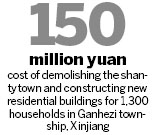
Now the kindergarten has a spacious main building and a modern playground, Ma said, adding that another kindergarten in Fukang has also benefited from Shanxi's financial support.
Chen Chunming, an official in charge of managing Shanxi's aid programs in Fukang, said the province has allocated 214 million yuan to support public service projects in Fukang, and 26 government employees, teachers and medical workers from Shanxi are working here as part of the aid project.
Since 2010, Shanxi has assisted 40 public projects in Fukang, and 30 of them have been completed, Chen said.
"These projects have been placed under strict supervision and public scrutiny," she said.
"Auditors from the local audit office are requested to inspect and review the fiscal condition of every project since its beginning, and after the auditors give the OK to the project's financial report, the aid office and the development and reform commission will then appropriate funds to it."
If the funds from Shanxi exceeds 50 percent of the total investment in a project, auditors from Shanxi will come to Fukang to inspect the accounts, Chen said, adding that no misuse of aid funds has been found so far.
The Shanxi government has hired a third-party agency to assess the effects and consequences of projects in Fukang that use aid funds, Chen said.
Since March 2010, the 19 regions designated to aid Xinjiang have financed 3,120 projects in the autonomous region, which involved 33.7 billion yuan, according to a working conference on aid projects in Xinjiang that was held in Urumqi last week.
In the first half of this year, 742 aid projects were launched, involving 8.8 billion yuan.
zhaolei@chinadaily.com.cn
(China Daily USA 07/22/2013 page5)
Most Viewed
Editor's Picks

|

|
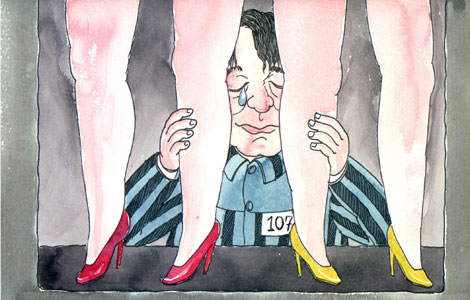
|

|

|

|
Today's Top News
Woman jailed in Dubai after reporting rape
Guangdong to probe airport bomber's allegations
Police meets GSK representative after scandal
US protests demand 'justice for Trayvon'
6.6-magnitude quake hits NW China
Minister rules out stimulus package
Top Chinese admiral to visit US this year
Victory improves Abe's hand
US Weekly

|

|
